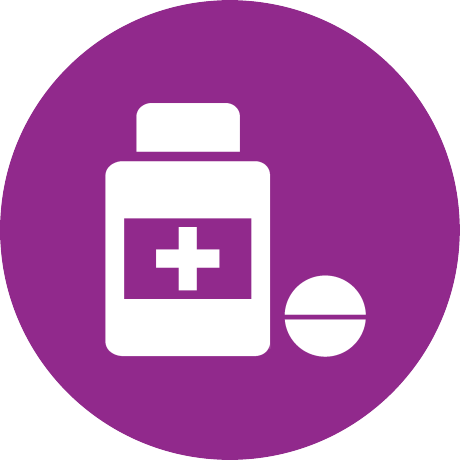Butterfly valves are crucial for controlling fluid flow in diverse industrial processes. Installed in various piping systems, they offer low operating torques, ease of installation, and maintenance. Their efficiency, durability, and cost-effectiveness make them a preferred choice across industries for on/off flow control in different applications.



Butterfly Valves
3 series from 3 manufacturers
-
- Agriculture
- Bakery and confectionery
- Beauty & Personal Care
- Brewing and beverages
- Building Services
- Chemical
- Convenience food
- Dairy
- Detergents
- Distilleries
- Drinking Water
- Food & Beverage
- Fruit Concentrates
- Heating, Water & Sanitation
- Marine
- Mining
- Oil Fats & Mayonnaise
- Paper Mills
- Pet Food
- Pharmaceutical
- Power Generation
- Research & Development
- Transportation
- Water Treatment
-
- Abrasive Liquids
- Acetate
- Acids
- Adhesives
- Alcohols
- Ammonia
- Beer
- Bitumen
- Carbon Fibers
- Caustic Solutions
- Cereals
- China Clay Slurry
- Chocolate
- CIP Fluids
- Clay
- Coffee
- Concrete
- Cooling Water
- Corrosive Dyes
- Corrosive Liquids
- Dairy Products
- Detergents
- Diesel Fuel Oil
- Drinking Water
- Dye Pigment
- Emulsions
- Ethylene Glycol
- Ferric Chloride
- Fertilizers
- Foam Protein
- Fruit and Vegetables
- Fruit Concentrates
- Gels
- Glycol
- High Temperature Oils
- High Viscosity Liquids
- HydrochloricAcid
- Hygienic Liquids
- Irrigation Water
- Lake Water
- Latex
- Light Fluids
- Lime
- Liquid CO2
- Low NPSH
- Low Viscosity Liquids
- LPG
- Meat
- Milk
- Molasses and Syrups
- Must
- Non-Newtonian Fluids
- Oil, Fats and Mayonnaise
- Paints
- Paints Resins
- Personal Care Products
- Pet Food
- Phosphoric Acid
- Plastic
- Process Condensate
- Produced Water
- Radio Active Fluids
- Redox
- Refrigerants
- Rubber
- Sauces
- Seawater
- Sensitive and Viscous Fluids
- Separated Oil Processing
- Sewage
- Silver Nitrate
- Soaps and Detergents
- Solids and Abrasives
- Solvents
- Spirits
- Sulphuric Acids
- Surface Water
- Surfactants
- Synthetic Fibers
- Thermal Oil
- Thin Liquids
- Thixotropic Fluids
- Toluene
- Toxic Liquids
- Ultra Pure Water
- Vegetable Oils
- Vinegar
- Viscose
- Viscous Liquids
- Wastewater
- Water
- Water Hardness
- Wine
- Wort
The Operating Principle of a Butterfly Valve
Butterfly valves have a simple yet effective design where a disc-shaped closing mechanism rotates 90 degrees to be able to control the flow of the passing material. The disc is mounted on a shaft and is housed inside a circular body where it rotates around a spindle. This means, when the disc is rotated, it either blocks or allows the flow of fluid, gas, or other material. The disc of a butterfly valve can be positioned at any angle. This allows the user to decide the exact flow passing through the valve. Butterfly valves can be operated either manually, pneumatically, or electrically.

Advantages & Disadvantages of Butterfly Valves
Butterfly valves offer numerous advantages, making them a popular choice across industries. Their simplicity, reliability, and versatility have made them an industry favorite. Some key advantages of butterfly valves include:
- Low pressure drops: Butterfly valves cause less resistance to flow compared to other valve types, minimizing pressure loss in industrial applications.
- Resistant to contamination: With a smooth internal surface, butterfly valves resist the buildup of contaminants, making them suitable for applications where cleanliness is crucial, such as in the food and beverage or pharmaceutical industry.
- Good flow control: Butterfly valves provide excellent flow control due to their large disc, allowing precise adjustment of flow within the opening range of 30-70 degrees.
- Lightweight and compact: Butterfly valves are smaller and lighter than many other valve types, making them easy to install in tight spaces and offering a space-saving solution.
- Versatile: Butterfly valves can handle a wide range of media and applications, including liquids, gases, powders, and slurries, and they can be operated manually, electrically, or pneumatically.
- Easy to operate: Butterfly valves are relatively simple to operate, allowing for quick opening and closing with minimal effort.
- Low cost: Butterfly valves are generally less expensive than other valves due to their simple design and fewer parts, making them cost-effective for installation and maintenance.
However, butterfly valves also have some limitations to consider:
- Limited control: Butterfly valves are primarily designed for on/off control and may not provide precise modulation of flow rates compared to specialized control valves.
- Throttling limitations: Excessive throttling of butterfly valves can lead to premature wear and reduced service life, particularly in applications requiring frequent adjustments to flow rates.
- Potential leakage: Depending on the seal design and quality, butterfly valves may experience some leakage, especially in high-pressure or high-temperature environments, impacting system performance and efficiency.
- Size and weight: Butterfly valves can be bulky and heavy, particularly in larger sizes, requiring additional support and space in the piping system.
Important Considerations when Selecting Butterfly Valves
When selecting a butterfly valve, there are several important considerations that should be taken into account to ensure that the valve meets the specific needs of the application. These considerations are crucial to take into account so that the butterfly valve provides optimal performance, durability, and safety. Some of these considerations include:
- Design: Butterfly valves are available in three different designs; centric, double eccentric, and triple eccentric. Application, pressure, and media define which design is the best solution.
- Size: Butterfly valves come in various sizes, and it is essential to select the appropriate size for the application it is intended for to ensure optimal performance.
- Pressure and temperature: The valve's pressure and temperature should match the requirements of the system. If the valve is not designed to handle the pressure and/or temperature of the system, it can lead to failure and safety hazards for people, equipment, and the environment.
- Material: The material of the butterfly valve should be compatible with the fluid being conveyed in the system. The material also plays a significant role in the duration and longevity of the butterfly valve.
- End connection: Butterfly valves come with different end connections, including lug and wafer. It is crucial to select the appropriate end connection for the system to ensure that the butterfly valve can be installed properly.
- Operating torque: The operating torque of the valve should be considered to ensure efficient and effective operations and actuator size selection.
- Flow rate: It is important to consider the flow rate of the system to ensure that the valve can handle the required flow rate and provide optimal safety, durability, and performance.
- Application: The application in itself is a crucial factor to consider when selecting the right butterfly valve, such as whether it will be used for control or isolation.
Why buy Butterfly Valves from AxFlow
AxFlow offers butterfly valves for a wide range of industries and applications. Only at AxFlow do you receive individual advice from industry-experienced process engineers and the manufacturer-independent selection of the world's leading process technology. Do you need support in selecting the right valve for your needs? Don't hesitate to get in touch. AxFlow's experts and engineers can provide guidance for selecting, specifying, installing, and maintaining your fluid-handling equipment.





